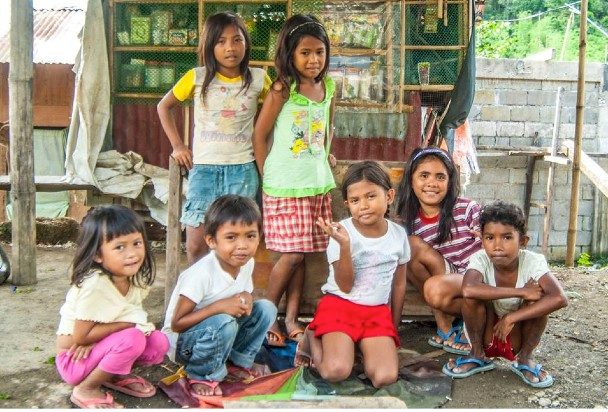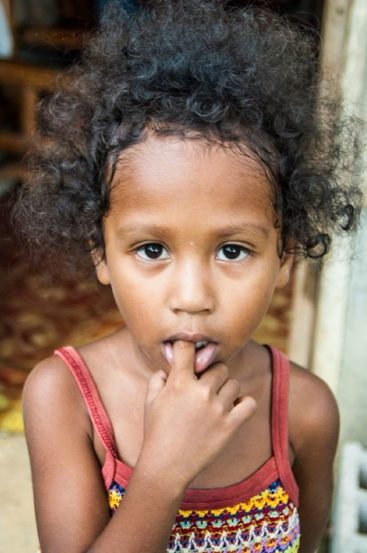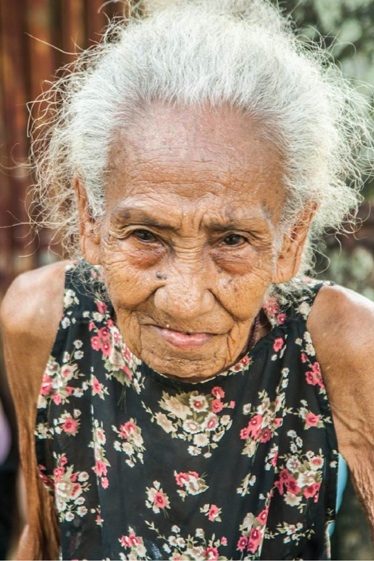SUMMARY
This is AI generated summarization, which may have errors. For context, always refer to the full article.

ILOILO, Philippines – Only 30% of Sitio Nagpana Aeta community’s chief product –coffee – has been revived since typhoon Yolanda wreaked havoc in the country last year.
“Wala pa kami gani sa ginatawag nga recovery stage (We have not even reached what they call the recovery stage),” said Gregorio Elosendo, Sitio Nagpana’s tribal chieftain.
Sitio Nagpana supplies Nestlé Philippines, the multinational food and beverage company, with 10 tons of coffee beans every harvest. It has a total of 45 hectares of fruit-bearing coffee plants.

Elosendo believes full recovery will still take two to 3 years. Hoping against hope, he believes only about 60% of the original coffee plantation will be regained next year.
The community’s coffee processor machine, a donation from Taytay sang Kauwagan Inc (TSKI), in cooperation with the Department of Science and Technology (DOST), was also destroyed during the typhoon, further crippling the local economy. They were about to use it for the first time when Yolanda made landfall. The machine was complete with a dryer, a de-huske,r and a roaster.
Elosendo claims TSKI and DOST professed to make a similar donation in 2015.
“Hamot ni siya kag daku (They are fragrant and big),” said Elosendo on their certified high-quality coffee beans, a hybrid of Arabica and Robusta. The community boasts that their coffees are pollinated and fertilized naturally by miros (civet cats) whose enzymes bring out a certain flavor in the produce.
Corn, rice, vegetables, and root crops are their other products, grown primarily for the consumption of the entire community comprised of 163 families. Based on a 2012 survey, Sitio Nagpana is home to 840 residents.
Grateful, frustrated, doubtful
“Ginatak-an na kami ka istoryahanay. Damu di gakaladto. Waay man dyapon nag-abot (We’re tired of interviews. Many came here but nothing came out of that),” Elosendo said.
The community also received tents from the United Nations; relief goods, blankets and household supplies from TSKI; and relief goods and rice from the local government. According to him, the biggest aid they received was from Advancing the Ministries of the Gospel (AMG) which donated a rough estimate of P1.5 million. Through the labor of the Aeta men and the trees from their forests, this monetary fund translated into 133 new houses. Every carpenter received an allowance of P2,000.

Elosendo claims that people involved in the Kapit-Bisig Laban sa Kahirapan-Comprehensive and Integrated Delivery of Social Services (KALAHI CIDSS) of the Department of Social Welfare and Development (DSWD) approached them but he admitted his reception was cold, an effect of a professed long-standing disappointment in the government.
“Hindi ko gusto nagatanga sa hangin….Ginakahuyan lang kami nila para makakwarta sila (I don’t like to be left in midair…. They’re only using us so they can get some money),” he said.
Two classrooms from the Department of Education and two classrooms sponsored by Savant Technology are currently being constructed. Sitio Nagpana’s old local elementary school, also damaged by the typhoon, catered only to limited grade levels. With the new buildings, they plan to teach until grade 6.
The next school, Lipata Elementary School, is 2.5 kilometers away.
Plans for tomorrow
“Kung gapamangkot sila kung ano man gid ang prioridad namon, ang sabat ko kalsada (When they ask what is our priority, my answer is road construction),” said Elosendo.
The village is 12 kilometers away from the town center. It is accessible by driving through a rough road, crossing a small river and a 500-meter uphill trek.
Sitio Nagpana covers 946 hectares of land reserved for the tribe since 1986. It wasn’t until 2006 that it was deemed as “ancestral domain.” Still, the community await the final documents and the implementing rules and regulations.
When their coffee plantation fully recovers and the appropriate machinery are procured, the community hopes to pursue its ambition – delayed but never fully crushed – to make a coffee brand that is uniquely their own. They hope to produce, pack, and sell coffee that bears the name of their place.
With their 8-foot high Nagpana Falls and a clear water basin, the tribe also plans to export spring mineral water.
“[Ang ini nga duta] para sa mga Aeta samtang nagakabuhi([This land] is for the Aetas for as long as they live),” Elosendo said. – Rappler.com
Add a comment
How does this make you feel?
There are no comments yet. Add your comment to start the conversation.